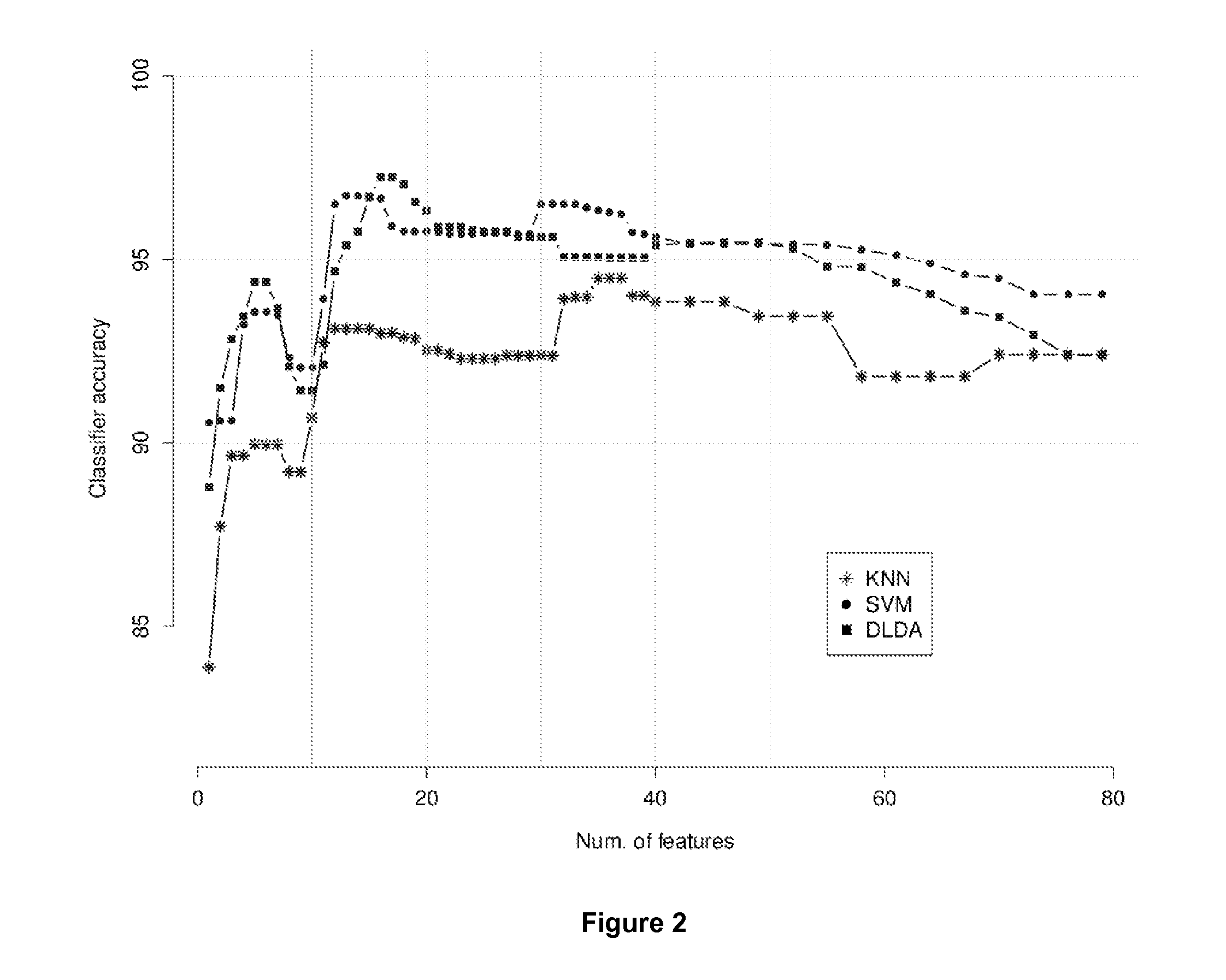Method for Predicting the likelihood of an Onset of an Inflammation Associated Organ Failure
a technology of inflammation and organ failure, applied in the field of methods for predicting the likelihood of an inflammation-associated organ failure onset, can solve the problems of septic shock, increased risk of hospital patients, and difficulty in early diagnosis of the beginning of the disease,
- Summary
- Abstract
- Description
- Claims
- Application Information
AI Technical Summary
Problems solved by technology
Method used
Image
Examples
Embodiment Construction
[0147]The present invention relates to markers of Organ failure and its duration / severity as well of the effect of therapeutic interventions. In particular embodiments, the present invention provides metabolites that are differentially present in Organ failure. Experiments conducted during the course of development of embodiments of the present invention identified a series of metabolites as being differentially present in Tables 2 and 3 provide additional metabolites present in plasma serum or other body liquids. The disclosed markers find use as diagnostic and therapeutic targets.
Diagnostic Applications
[0148]In some embodiments, the present invention provides methods and compositions for diagnosing organ failure, including but not limited to, characterizing risk of organ failure, stage of organ failure, duration and severity etc. based on the presence of organ failure specific metabolites or their derivatives, precursors, metabolites, etc. Exemplary diagnostic methods are describe...
PUM
| Property | Measurement | Unit |
|---|---|---|
| molecular mass | aaaaa | aaaaa |
| pressure | aaaaa | aaaaa |
| pressure | aaaaa | aaaaa |
Abstract
Description
Claims
Application Information
 Login to View More
Login to View More - R&D
- Intellectual Property
- Life Sciences
- Materials
- Tech Scout
- Unparalleled Data Quality
- Higher Quality Content
- 60% Fewer Hallucinations
Browse by: Latest US Patents, China's latest patents, Technical Efficacy Thesaurus, Application Domain, Technology Topic, Popular Technical Reports.
© 2025 PatSnap. All rights reserved.Legal|Privacy policy|Modern Slavery Act Transparency Statement|Sitemap|About US| Contact US: help@patsnap.com



